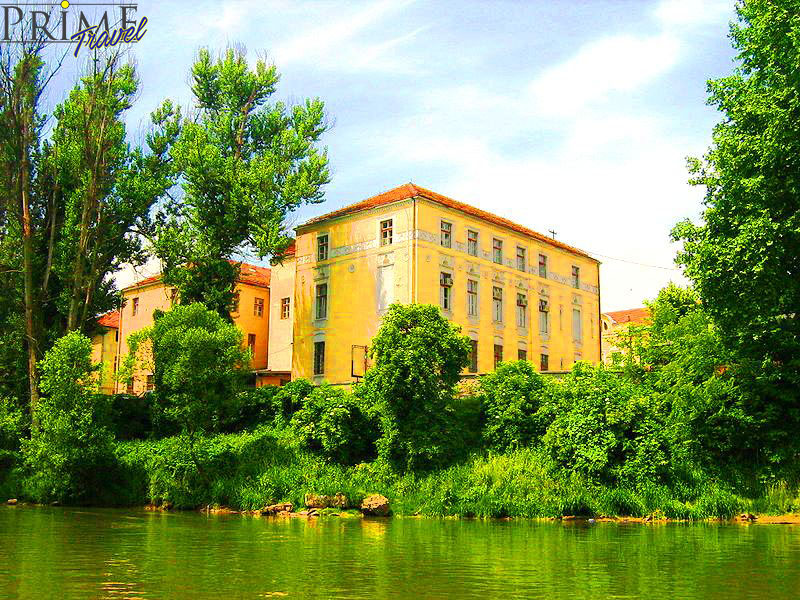
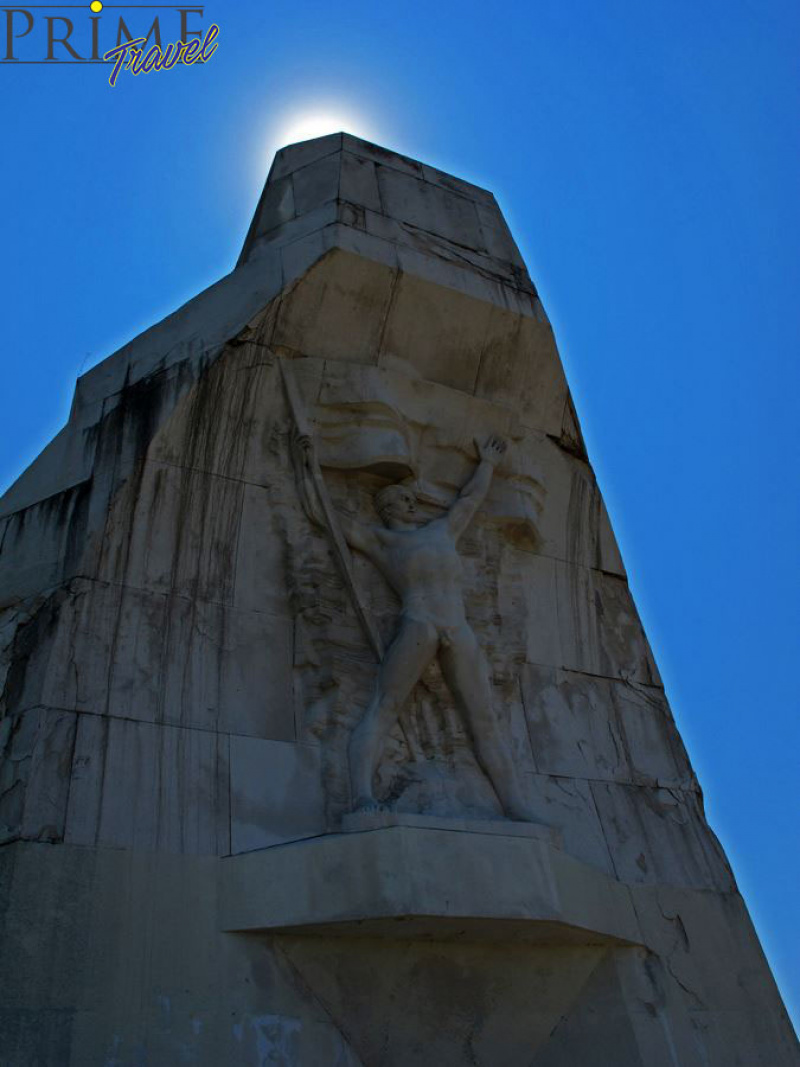
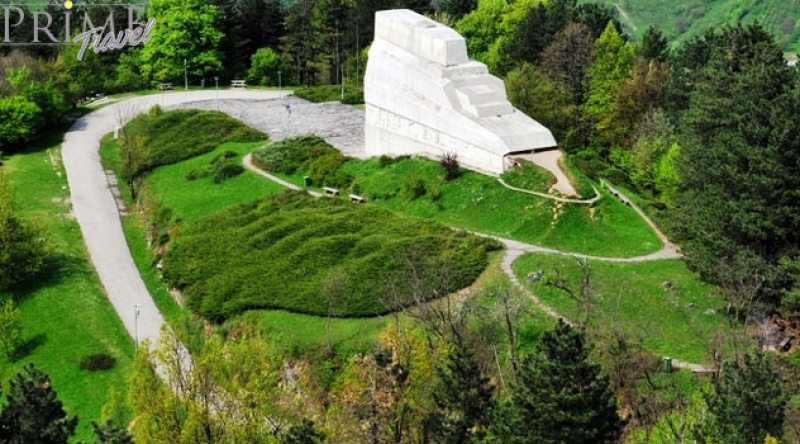
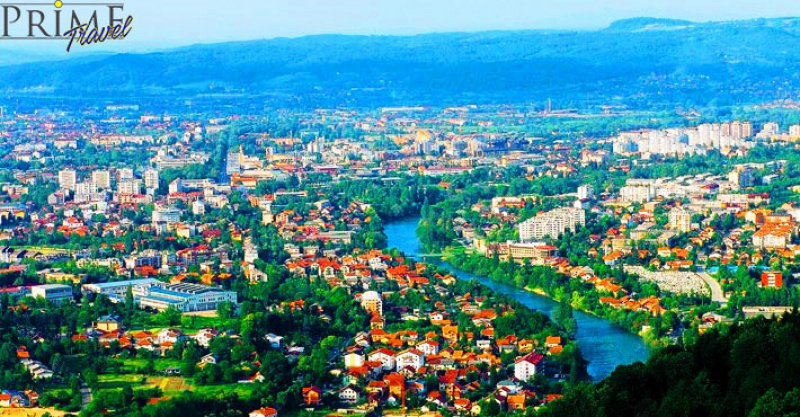
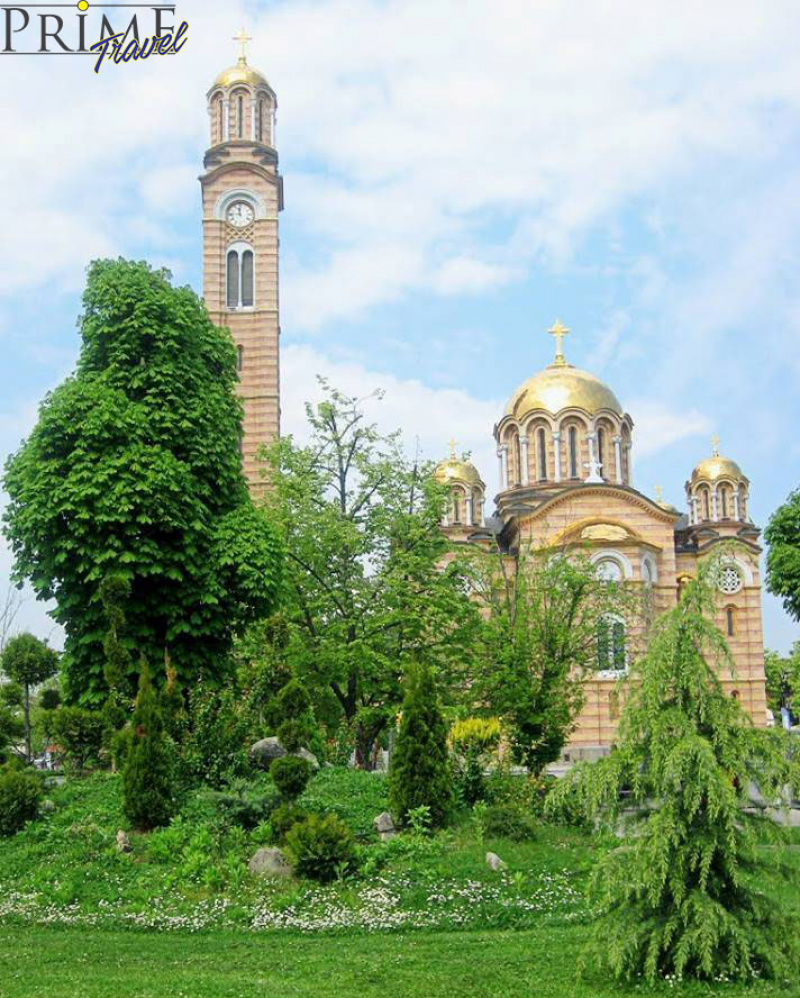
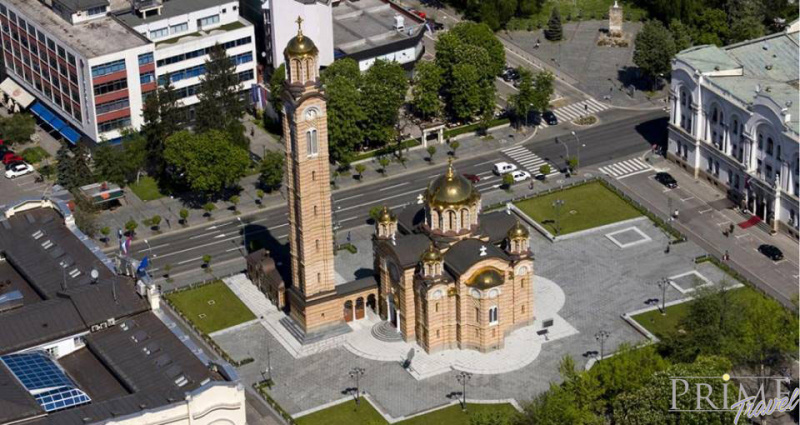
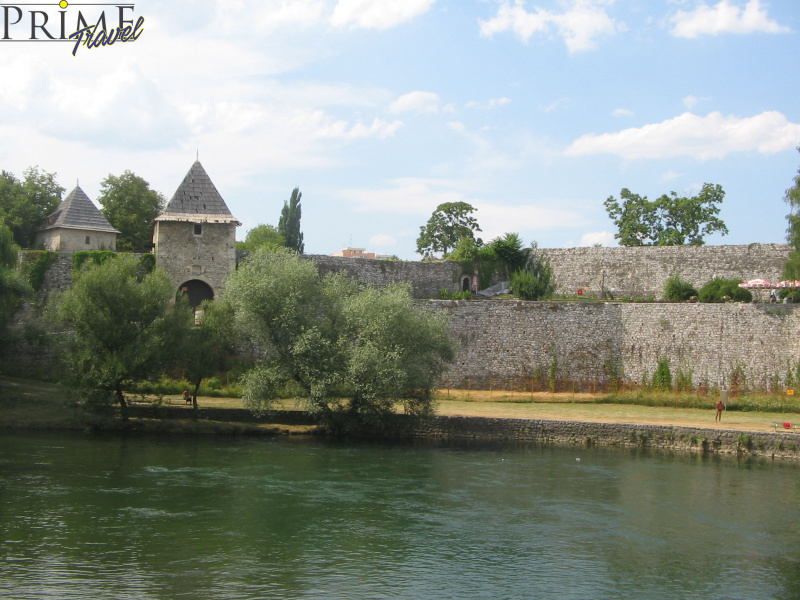
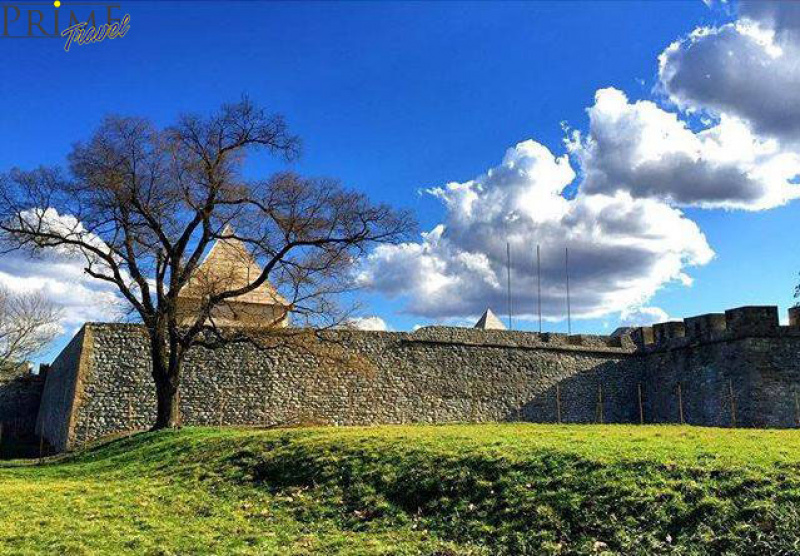
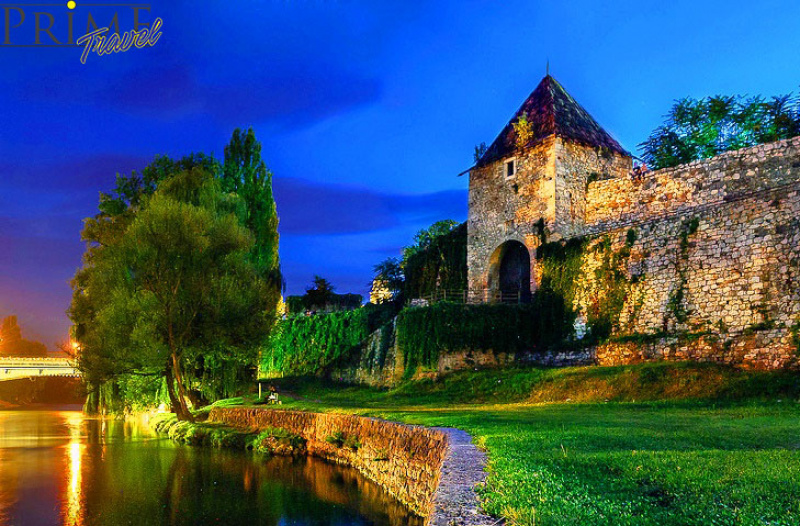
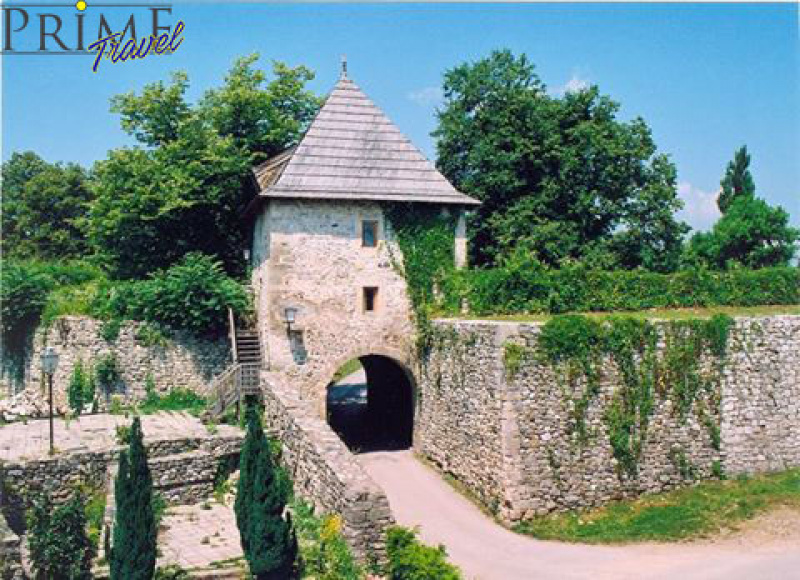
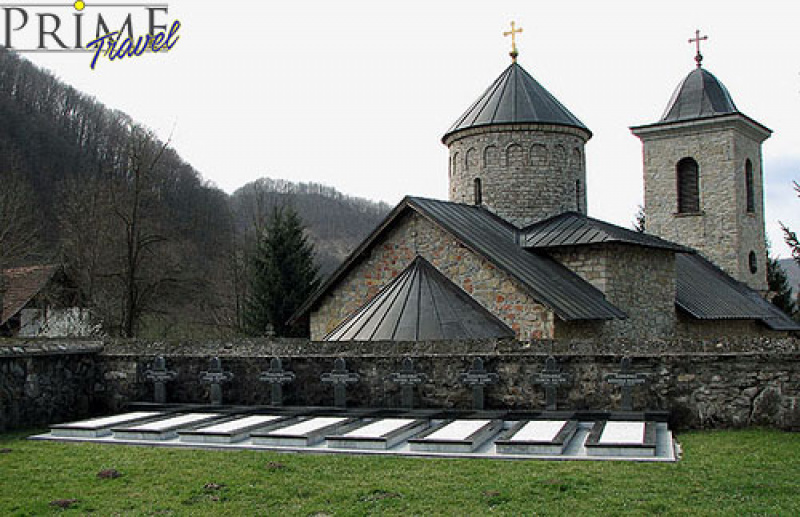
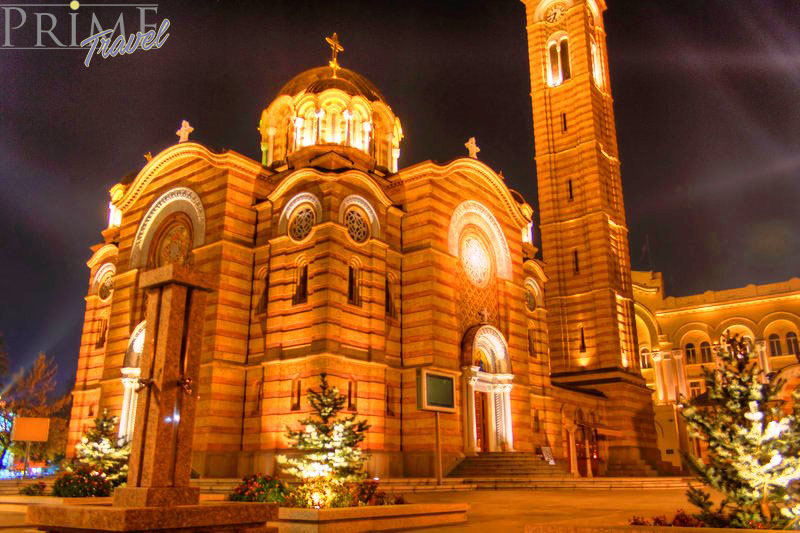
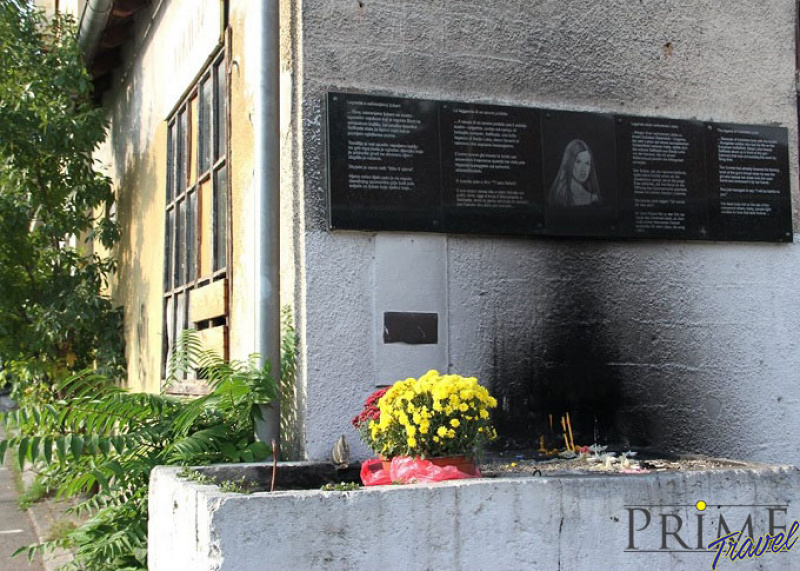
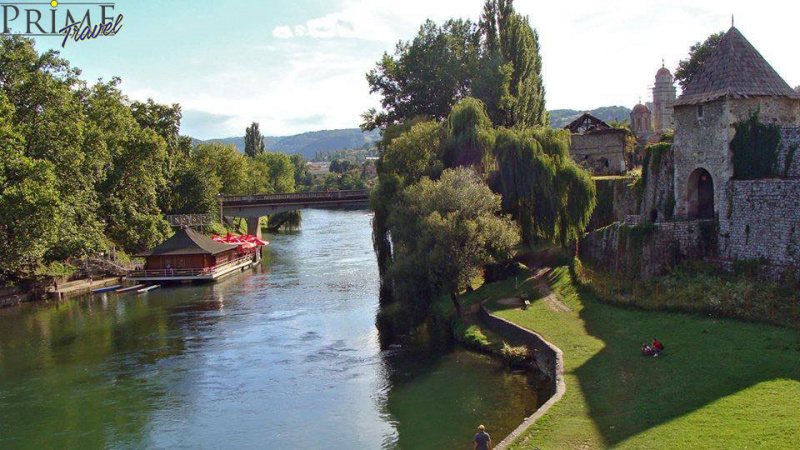
Price: Contact us
Under the name Banja Luka the city was first mentioned in the Charter of the Hungarian King Vladislav II Jagiellonian, 06 February 1494.
After discussions led by philologists and historians, they determined that the name came from the old "bani" - Bans, who disappeared from our language, and was only kept in the name of the city, to this adjective they added the noun "port" which means flat land, the whole name of the town comes from the compound "Ban flat land“.
Roman period
A stay of the Romans in this area is evidenced by numerous artifacts found at various locations near the present city of Banja Luka. The Romans first discovered the healing effects of the mineral waters at springs near Banja Luka: Gornji Seher (today's Serbian Spas), Slatina and Laktaši.
Back than Banja Luka was located on a very important rout, built by Romans, who led from Split (Salona) to Gradiska (Servitium). In the heart of the city, there is cultural-historical monument - Fortress Kastel - It was a Roman military fortress Castra inside which roman soldiers lived.
The period of Ottoman rule
In that period were built Islamic religious objects of cultural and historical significance: mosques Ferhadija (as an endowment of Ferhad Pasha Sokolovic) and Arnaudija (whose founder was the Bosnian defterdar (treasurer) Husan Effendi), and important elements of urban Ottoman architecture - Clock tower, which was located near Ferhadija.
In the Banja Luka region, during XVI and XVII century, many orthodox monasteries were built as a witnesses of Serbian medieval architecture. These buildings are exceptional beautiful and have a great value.
In any period of development they didn´t spare Banja Luka from destruction. After a brief incursion of Austrian troops in 1688. The town center Seher was completely burned. Desolation have continued with battles, fire, plague which devastated the city in the late eighteenth century.
Period of 350 years of Ottoman rule, in which Banja Luka was an administrative unit of different importance, did not contribute to urbanization and modernization of the city.
The modern era
The base for that progress were made by Trappist monks of the Franciscan monastery, which was built in XIX century. In the context of his monastery they built a mill, brewery, textile factory and hydroelectric power plant in Delibašino village and industry for pasta and famous cheese "Trappist".
Austrians worked on construction of roads and bridges, so that in 1891 they connected the railway Banja Luka with Vienna and Budapest. They started with the exploitation of minerals from the Laus and near Kotor Varos, they opened many industrial, educational and medical institutions.
Sights you can visit in Banja Luka:
Castel
In the heart of the city of Banja Luka Castel proudly stands as witness of the past, the present and the skeleton of a prediction for the future. With its rich history, the fortress is situated in the center of Banja Luka. The old walls of the fortress Castel are there to awaken the curiosity about the history of this town, tell the story of the battles, trade, successes and failures, which was the culprit and witness to itself.
Numerous material findings, written sources and cartographic documents, today enable us to greatly consider all stages of the origin and development of the fortress. The first beginnings of Village development on the site of Castel date from the Paleolithic era, as indicated by findings of stone tools and weapons. The location of this village that is still developing through the era of the Neolithic and Bronze Age settlements is typical for Baden culture as it is situated on the elevated parts of the Vrbas river terraces.
Inside the fortress is found more instances of late antique bronze, ceramics, and one late antique bronze fibula. In addition, in the central area of the fortress were determined remains of the ancient buildings of larger dimensions, with semicircular apse projection on the south side. Whether it comes to the ancient Roman sanctuary, an administrative building or complex of different content will show the systematic research of immediate concern.
A charter from 1525 precisely states that Banja Luka is actually the name of the fortress called Castell NOSTRO Bagni LUCA. From the content of that Charter, one might even conclude that the Banja Luka fortress was built on the site of an older and smaller fortification after 1463, as a part of the border on the river Vrbas in the defense system of the Hungarian kingdom against Turkey (Jajce was the southernmost point).
Franciscan monastery of Marija Zvijezda
Those who are looking for an unexpected beauty doesn´t need to go beyond the Franciscan monastery of Marija Zvijezda. The colors and images here found inspire awe in the viewer. Visitors can see rare and valuable books, including epistles of St. Augustine, as well as an extremely valuable paintings. Lovers of good food will be delighted to discover the famous white cheese in this region. Trappist Colony in Banja Luka (Delibašino village) was founded in 1869, and the church in the monastery was built between 1874 and 1875.
Apart from ritual objects made in the 19th and 20th centuries, precious metal, monastery collection includes two very valuable paintings: the Crucifixion and St. Filomena, both are works of Venetian masters from the 16th century. As in most monasteries and here is a collection of old printed books, in which among other things is a collection of epistles of St. Augustine, printed in 1493 in Basel. The monastery is famous for its delicious white cheese which monks here products for over a century.
Romanovich was a small wooden church, which is located near Gradiska, north-west of Banja Luka. St. Nikola have dedicated the villagers Romanović located on the eastern slopes of Mount Kozara, 20 km south of Gradiska. It was built in the first half of the 18th century and is among the last remaining wooden orthodox structures in the country.
Orthodox Cathedral of Christ the Savior
Holy Trinity Church was built between the two world wars in the center of Banja Luka. Construction of the temple lasted from 1925 to 1929, and was officially consecrated on Ascension Day in 1939. During the German bombing on 12th April 1941, the temple was hit and seriously damaged the altar area (APSE). In May the same year the Ustasha declared the temple as a "mockery of the city" and ordered the Serbs, Jews and Gypsies to destroy it completely.
After World War II, for more than half a century, many buildings are renovated, for the Church the renovation was not allowed, but on the place where the Church stayed was built a monument to fallen. In the early nineties Banja Luka parish got the permission to rebuild the destroyed Church, and the monument to fallen soldiers was moved to a nearby location, also owned by the Serbian Orthodox Church. Reconstruction of the church began in 1993, when the foundations were blessed. This solemn act was carried out by Serbian Patriarch Pavle with the bishops and clergy of the Serbian Orthodox Church. The temple was rebuilt as the Cathedral of Christ the Savior, because in the meantime in Banja Luka (1963-1969) was built the Temple which is named the Holy Trinity, as the memory of the one who was destroyed, and for which the Orthodox Serbs thought that it would never be able to renew.
Garden Petar Kocic
Monument to the writer and national tribune (1877-1916) is located in a City Park (across from the main square), and represents yet another work of Antun Augustinčić in Banja Luka and Vanja Radauš. The monument was completed in 1929, and set up and officially unveiled on 6 November 1932.
Banj hill
Banj hill (formerly Šehitluci) is a famous Banja Luka resort. Located on the south side of town and there is a panoramic view of the city. It is located at 431 meters above sea level. The excursion destination is rich with forests, trails for walking and hiking, water sources and landscaped areas for relaxation. On it there is a monument to fallen Krajina citizens killed in the NOB, work of a famous Croatian - sculptor Anthony Augustinčić. Its top is only 5 km away from the center of Banja Luka.
The monument is mausoleum type height 13 meters and a length of 24 meters. Position of the monument on the Banj hill is such that it can be seen from almost all parts of the city. The monument was once visited by people from all over former Yugoslavia. Here were the start and finish of motorcycle and bicycle races. It is a place where they held lectures in history. This monument is often visited by the delegation that arrives in Banja Luka.
The old name of this excursion destination was Šehitluci. In the old Austro-Hungarian maps you could saw only the height without any names. The old name is adopted since 1933 when on the hill was built a small pyramid in memory of deceased Muslims (martyrs) in fighting against the Austro-Hungarian Empire in the 19th century.
Vrbas
This river is a tributary of the Sava River in the western part of Bosnia and Herzegovina, about 250 km long, with a catchment area around 5900 km2. Arises from two sources on-Zec Mountain (branch Vranica), 1780 m above sea level. Vrbas River cuts a composite valley, passing through Škopljanska valley, Vinacku gorge, Jajce valley, canyon valley Tjesno, Banja Luka valley, a lower flow through its Slijevče field. Tributaries are: Vrbanja, Pliva, Ugar and others. On the river are several major hydro-power plants built. On the banks of the Vrbas River or in its vicinity are Gornji Vakuf, Bugojno, Donji Vakuf, Jajce and Banja Luka.
Safikada Tomb
Sefikada tomb, located in the city center, in front of the fortress Kastel, testifies to Banja Luka a legend of eternal love (Romeo and Juliet in the Banja Luka version). Legend has it that the young and beautiful Safikada (from Banja Luka) fall in love at first sight in an Austro-Hungarian soldiers who stood guard on the walls of the castle. Order on the sudden movement of the Austro-Hungarian army was a terrible blow to their happiness. Breaking up, the two young swore to eternal love and faithfulness to the grave. After a while came the news of his death and Safikada throwing her body in front of the top, which marked the noon from Castel, said, "I am loyal to you till the grave". Her body fell to the place where the monument is today, love couples light they candles for love.
Gomionica Monastery
Gomionica Monastery, built in the style of Raska school, is located Zmijana. Tradition says that his patron was Zmijanje the Duke of Obrad. Moštanica, founded in 1562, is located on the border of Banja Luka, Prijedor and Kozara and it was built in the style of the Moravian school. Liplje Monastery is situated on Borja mountain, near Maslovara. Built in the late fifteenth and early sixteenth century, with elements of Raska school.